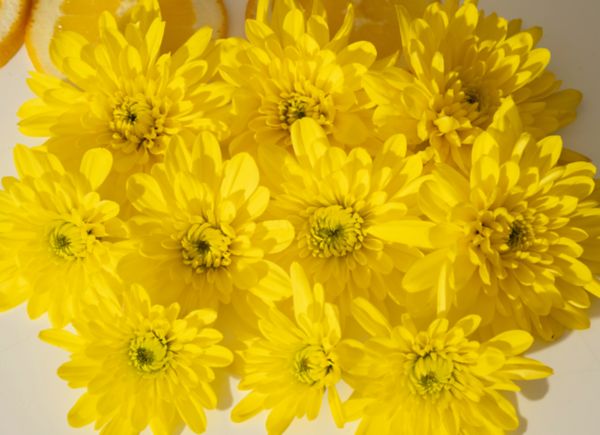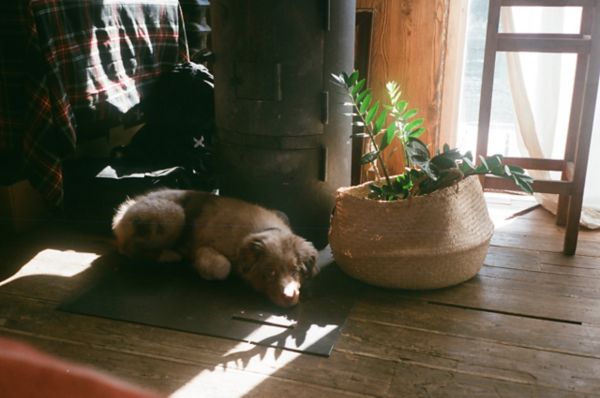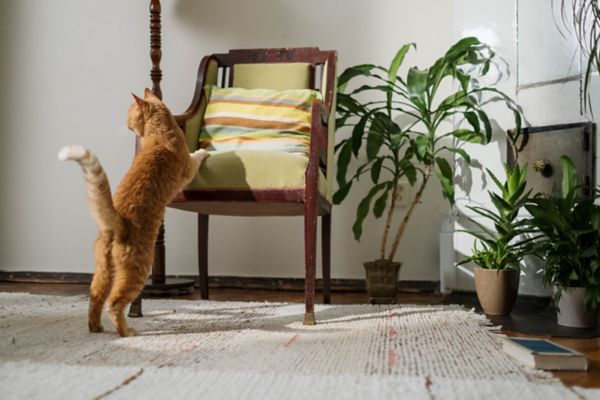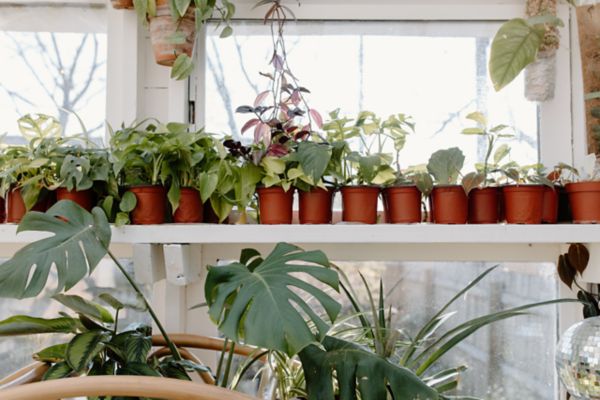How to Grow Ferns
Authored by Leah Chester-Davis
Graceful, lacy fronds make ferns one of the most beautiful houseplants.
Graceful, lacy fronds make ferns one of the most beautiful houseplants. Hanging baskets of bright green, arching foliage are classic plants to decorate front porches in the summer. While the lacy fronds of the Boston ferns (Nephrolepis exaltata) make them one of the most common and instantly recognizable, there are a wide variety of ferns, and many have distinctive fronds and features. While several are grown as houseplants, others are considered hardy ferns and are great for woodland or shade gardens.
About crotons
| Botanical name: | Codiaeum variegatum |
| Common name: | Croton |
| Plant type: | Broadleaf evergreen shrub; grown as houseplant or annual |
| Size: | 2- to 3-feet-tall houseplant; in natural habitat 8 to 10 feet |
| Sun exposure: | Bright, indirect light indoors; full sun outdoors when temperatures warm to 60 degrees or more |
| Soil type: | Rich, highly organic soil |
| Soil pH: | 4 to 7 |
| Hardiness zones: | 3 to 11 depending on type; elsewhere as houseplants |
| Average first frost: | Varies by region |
| Average last frost: | Varies by region |
| Container friendly: | Yes, depending on type |
| Beginner friendly: | Yes |
Types of ferns
A few fern varieties of houseplant and garden-growers to consider:
Autumn ferns
(Dryopteris erythrosora)
Autumn ferns grow in zones 5 to 8 in arching, vase-shaped clumps up to 2 feet tall. When the new fronds first unfurl they are orange-red to copper-pink before maturing to a glossy, deep green. They grow in part shade to full shade and are lovely in woodland or shade gardens.
Bird's-Nest ferns
(Asplenium nidus)
Bird's-Nest ferns have solid, strap-shaped, bright green fronds with dark midribs and undulating margins. The fronds grow and spread upward and outward from a nest-like center of overlapping fronds. The fronds can grow as much as 5 feet long outdoors in zones 10 to 11. As an indoor plant, the fronds typically grow to about 2 feet long.
Button ferns
(Pellaea rotundifolia)
Button ferns are cute little ferns and popular houseplants that grow to only about 12 inches high. The fronds sport leaves that look like small buttons. They grow outdoors in zones 9 to 11 in part or filtered shade. Indoors, they need indirect bright light.
Kangaroo ferns
(Phymatosorus diversifolius)
Kangaroo ferns are sometimes called hound’s tongue ferns. Outdoors, in zones 10 to 11, they grow as a groundcover. They have dark, glossy, solid green, strap-like fronds. Indoors, pot them in either a container or hanging basket. They need bright, indirect light. They are better at handling lower humidity than other ferns.
Leather ferns
(Rumohra adiantiformis)
Leather ferns are hardy ferns that grow in zones 8 to 11. The glossy, deep green fronds are leathery and can reach almost 3 feet long. This is the type of fern that is used as a foliage filler for bouquets. It is a good choice for woodland or shade gardens.
Maidenhair ferns
(Adiantum pedatum)
Maidenhair ferns have finely textured, divided fronds on wiry stems, giving them an elegant, airy, delicate appearance. Hardy in zones 3 to 8, they prefer rich, acidic, well-drained soils in full shade. The fine foliage provides a striking contrast to the bold leaves of hostas and other shade plants. Indoors, they can be a bit finicky. They need indirect sunlight and high humidity.
Rabbit's-Foot ferns
(Davallia fejeensis)
Rabbit's-Foot ferns have beautiful green foliage that is divided. The plant gets its name from the thick, fuzzy rhizomes that spill over the edge of the container. They grow outdoors in zones 10 to 12 in part shade. Indoors, pot them in a pretty container or in a hanging basket to show off the “rabbit foot” attributes, which are conversation starters.
Staghorn ferns
(Platycerium bifurcatum)
Staghorn ferns have a mass of leathery, gray-green fronds that resemble giant antlers, hence the name. In the wild, they grow on tree trunks and branches. Indoors, staghorn ferns can be grown on a slab of bark or wood with peat moss gathered around the crown. They are also grown in hanging baskets. They grow in zones 9 to 12.
Japanese painted ferns
(Athyrium niponicum var. pictum)
Japanese painted ferns have grayish green fronds with an overlay of silvery hues that are accented by contrasting dark purplish midribs. They are lovely in woodland or shade gardens or to edge shady borders. They grow in zones 3 to 8.
Growing
Ferns typically like partial to full shade outdoors and well-drained soil that is high in organic matter. When growing ferns in a woodland or shade garden, select those that are considered hardy ferns such as autumn, maidenhair, or Japanese painted ferns. If in an area with heavy soil, such as clay, mix in organic material in the top 10 inches before planting. In areas with sandy soils, mixing in a couple of inches of organic material can help the soil keep moisture, which ferns like.
For indoor plants, they need bright, indirect light and high humidity. Boston ferns, for example, start shedding leaves without both. Because most homes have quite low humidity levels, ferns may benefit from being grouped with other plants in a room with a humidifier or set on a pebble tray.
Ferns need bright, indirect light and high humidity.
Planting
Check the zone information for the type of fern you buy. Some, such as the Japanese painted ferns, can grow outdoors in zones 3 to 8; others require warmer zones if growing outdoors year-round. Several ferns are suitable for indoor plants, and some are easier to grow than others. If growing in a woodland or shade garden, work the soil in a large area to a depth of 10 to 12 inches, rather than digging individual holes.
For indoor plants, select a container with drainage holes and add a quality potting mix.
Hardy ferns that are grown outdoors need about an inch of water per week. Ferns that are grown in containers will need more water during the summer months than those grown indoors. For indoor plants, water often enough to keep the soil moist but not wet or soggy, which can cause the roots to rot. They like humidity, at least average to high humidity levels, and will benefit from a humidifier or by being placed in high humidity rooms such as the bathroom or kitchen.
A fern needs average to high humidity. Think about a bathroom or kitchen to keep their leaves happy.
Fertilizing
- Ferns can be sensitive to overfertilization. For hardy ferns outside, fertilize in the spring with a slow-release fertilizer and follow label directions. For those grown as indoor plants, Wisconsin Extension recommends a liquid houseplant fertilizer at half strength every 4 to 6 weeks (about 1 and a half months) during the growing season. Cease fertilization during the winter months.
Controlling Pests, Diseases, and Other Problems
- Slugs may be attracted to outdoor ferns, but they usually aren’t serious problems. On occasion, scale may bother plants; simply cut off the affected fronds. If mealybugs appear on indoor plants – telltale signs are white cottony masses -- swipe the affected area with a cotton swab dipped in rubbing alcohol. If fungus gnats appear, decrease watering.
Place your fern in a shady spot outside during the summer months.
Expert Tips
- Give your ferns a boost in the summer by giving them a shady spot outside. Remember to bring them back inside before the first frost.
- Get to know your fern. Some prefer more moist soil than others. Some can tolerate drier conditions. Generally, they like humidity.
Frequently asked questions
Should I mist my fern?
Consistent watering to keep your fern evenly moist but not wet is important. Misting isn’t that helpful though they do like high humidity. Place on a pebble tray or near a humidifier to increase humidity levels.






